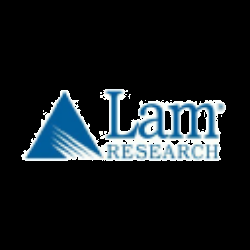Overall, Lam Research exhibits strong business quality through its operational execution, diversified product portfolio, and strategic investments in R&D. Future prospects look promising, particularly in NAND and advanced packaging, although customer concentration and market uncertainties pose risks.
Analysis Date: January 29, 2025
Last Updated: March 12, 2025
Trailing Twelve Months (TTM) values provide a view of the company's performance over the last year.
Graham Value Metrics
Benjamin Graham's value investing approach focuses on finding stocks with a significant margin of safety between their intrinsic value and market price.
Intrinsic Value
Estimated fair value based on Graham's formula
$128.43
Current Market Price: $58.93
IV/P Ratio: 2.18x (>1.0 indicates undervalued)
Margin of Safety
Gap between intrinsic value and market price
54.0%
Graham recommended a minimum of 20-30% margin of safety
Higher values indicate a greater potential discount to fair value
ROE: 50.74921090902902
ROA: 6.003140335876422
Gross Profit Margin: 47.754148783694674
Net Profit Margin: 26.488658708003804
Trailing Twelve Months (TTM) values provide a view of the company's performance over the last year.
Strong Return on Equity
The return on equity is 50.75%, indicating excellent profitability and efficiency in generating returns for shareholders.
High Gross and Net Profit Margins
47.75%
Gross Profit Margin
With a gross profit margin of 47.75% and a net profit margin of 26.49%, LRCX showcases strong profitability and effective cost management.
No profitability weaknesses identified.
About Profitability Metrics
Profitability metrics measure a company's ability to generate earnings relative to its revenue, operating costs, and other relevant metrics. Higher values generally indicate better performance.
Return on Equity (ROE)
Measures how efficiently a company uses its equity to generate profits
50.75%
10%
15%
Higher values indicate better returns for shareholders
TTM (as of 2025-04-16)
Return on Assets (ROA)
Measures how efficiently a company uses its assets to generate profits
6.00%
3%
7%
Higher values indicate better asset utilization
TTM (as of 2025-04-16)
Gross Profit Margin
Percentage of revenue retained after accounting for cost of goods sold
47.75%
20%
40%
Higher values indicate better efficiency in production
TTM (as of 2025-04-16)
Net Profit Margin
Percentage of revenue retained after accounting for all expenses
26.49%
8%
15%
Higher values indicate better overall profitability
TTM (as of 2025-04-16)
Strong Liquidity Ratios
The current ratio of 2.54 and quick ratio of 1.73 indicate that LRCX has sufficient liquidity to cover its short-term liabilities.
Low Debt Levels
0.57
Debt-to-Equity Ratio
The debt-to-equity ratio is 0.57, indicating a conservative approach to debt, which enhances financial stability.
Moderate Interest Coverage
26.23
Interest Coverage Ratio
While an interest coverage ratio of 26.23 is strong, it suggests that there is some reliance on debt financing.
About Financial Health Metrics
Financial health metrics assess a company's ability to meet its financial obligations and its overall financial stability.
Debt to Equity Ratio
Total debt divided by total equity
0.57x
1.0x
2.0x
Lower values indicate less financial leverage and risk
Less than 1.0 is conservative, 1.0-2.0 is moderate, >2.0 indicates high risk
Q2 2025
Current Ratio
Current assets divided by current liabilities
2.54x
1.0x
2.0x
Higher values indicate better short-term liquidity
Less than 1.0 is concerning, 1.0-2.0 is adequate, greater than 2.0 is good
Q2 2025


